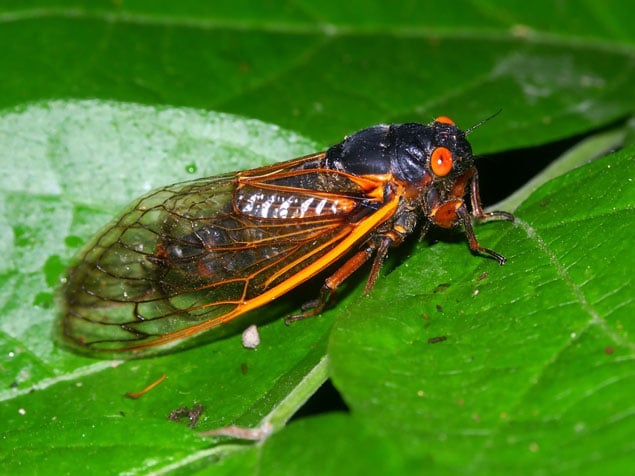If you haven’t seen or heard the buzz yet, the cicadas are here—and some (many) people are already looking forward to their departure. Sorry, haters: expect the bugs to stick around until late June, says Floyd Shockley, the collections manager for the Department of Entomology at the Smithsonian National Museum of Natural History.
Brood X has a six-week life cycle, and the current cohort are mainly male. Expect the number of insects to double next week when the females rise up. The horny bugs emerge with a singular goal in mind: getting laid. Once they’ve copulated, the males will die off while the ladies stick around to lay eggs. The laggiest of cicadas will be gone by the Fourth of July, predicts Shockley.
The eggs will hatch six to eight weeks later, ready to burrow back into the ground until 2038. But fear not—there’s no need to brace for a second wave of cicada invasion.
“They’re super tiny, smaller than a grain of rice,” says Shockley. “The bulk of the cicada activity, to the untrained eye, is going to disappear.”
Update: The original headline noted the cicada population will double next week. The headline has been updated to reflect that the cicada population will grow exponentially over the next week.



















